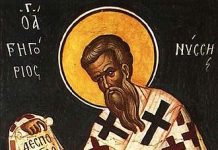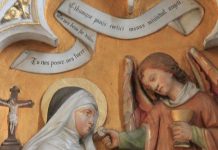APOSTOLIC LETTER
ISSUED MOTU PROPRIO
PROCLAIMING
SAINT BRIDGET OF SWEDEN
SAINT CATHERINE OF SIENA AND
SAINT TERESA BENEDICTA OF THE CROSS
CO-PATRONESSES OF EUROPE
FOR PERPETUAL REMEMBRANCE
1. The hope of building a more just world, a world more worthy of the human person, stirred by the expectation of the impending Third Millennium, must be coupled with an awareness that human efforts are of no avail if not accompanied by divine grace: “Unless the Lord builds the house, those who build it labour in vain” (Ps 127:1). This must also be a consideration for those who in these years are seeking to give Europe a new configuration which would help the Continent to learn from the richness of her history and to eliminate the baneful inheritances of the past, so as to respond to the challenges of a changing world with an originality rooted in her best traditions.
There can be no doubt that, in Europe’s complex history, Christianity has been a central and defining element, established on the firm foundation of the classical heritage and the multiple contributions of the various ethnic and cultural streams which have succeeded one another down the centuries. The Christian faith has shaped the culture of the Continent and is inextricably bound up with its history, to the extent that Europe’s history would be incomprehensible without reference to the events of the first evangelization and then the long centuries when Christianity, despite the painful division between East and West, came to be the religion of the European peoples. Even in modern and contemporary times, when religious unity progressively disintegrated as a result both of further divisions between Christians and the gradual detachment of culture from the horizon of faith, the role played by faith has continued to be significant.
The path to the future cannot overlook this fact, and Christians are called to renew their awareness of it, in order to demonstrate faith’s perennial potential. In the building up of Europe, Christians have a duty to make a specific contribution, one which will be all the more valid and effective to the extent that they themselves are renewed in the light of the Gospel. In this way they will carry forward that long history of holiness which has traversed the various regions of Europe in the course of these two millennia, in which the officially recognized Saints are but the towering peaks held up as a model for all. For through their upright and honest lives inspired by love of God and neighbour, countless Christians in a wide range of consecrated and lay vocations have attained a holiness both authentic and widespread, even if often hidden.
2. The Church has no doubt that this wealth of holiness is itself the secret of her past and the hope of her future. It is the finest expression of the gift of the Redemption, which ransoms man from sin and gives him the possibility of new life in Christ. The People of God making their pilgrim way through history have an incomparable support in this treasure of holiness, sensing as they do their profound union with the Church in glory, which sings in heaven the praises of the Lamb (cf. Rev 7:9-10) and intercedes for the community still on its earthly pilgrimage. Consequently, from very ancient times the Saints have been looked upon by the People of God as their protectors, and by a singular practice, certainly influenced by the Holy Spirit, sometimes as a request of the faithful accepted by the Bishops, and sometimes as an initiative of the Bishops themselves, individual Churches, regions and even Continents have been entrusted to the special patronage of particular Saints.
Accordingly, during the celebration of the Second Special Assembly for Europe of the Synod of Bishops, on the eve of the Great Jubilee of the Year 2000, it has seemed to me that the Christians of Europe, as they join their fellow-citizens in celebrating this turning-point in time, so rich in hope and yet not without its concerns, could draw spiritual benefit from contemplating and invoking certain Saints who are in some way particularly representative of their history. Therefore, after appropriate consulation, and completing what I did on 31 December 1980 when I declared Co-Patrons of Europe, along with Saint Benedict, two Saints of the first millennium, the brothers Cyril and Methodius, pioneers of the evangelization of the East, I have decided to add to this group of heavenly patrons three figures equally emblematic of critical moments in the second millennium now drawing to its close: Saint Bridget of Sweden, Saint Catherine of Siena and Saint Theresa Benedicta of the Cross. Three great Saints, three women who at different times—two in the very heart of the Middle Ages and one in our own century—were outstanding for their fruitful love of Christ’s Church and their witness to his Cross.
(To continue reading, please see here).










